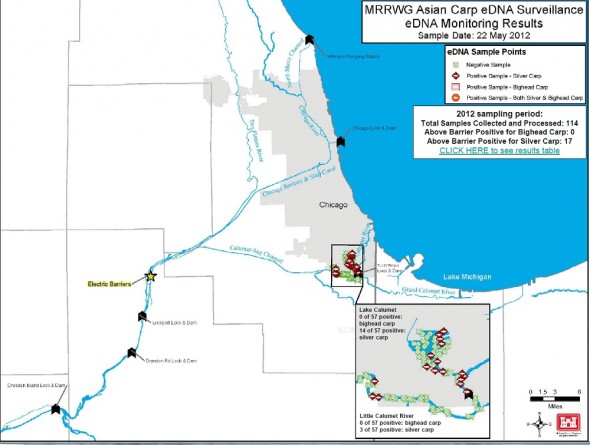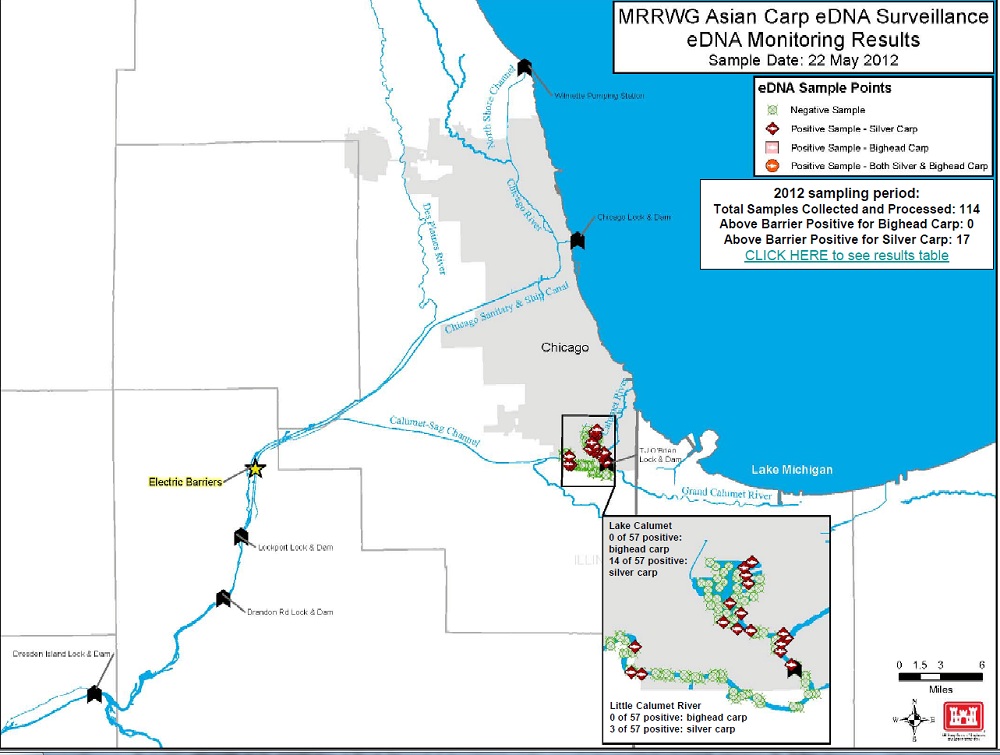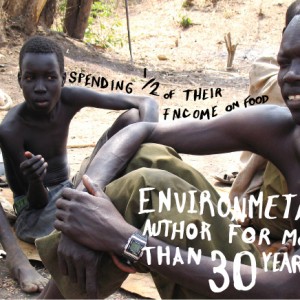Tracking Invasive Asian Carp: Where Are Those Flopping Fish?
An increasing percentage of eDNA samples, taken near Lake Michigan, are turning up positive for carp. But what does that really mean?

There is a general consensus among environmental groups, as well as state and federal government agencies, that Asian carp are knocking on the door of the Great Lakes — or rather, the electric barrier in Chicago that is meant to zap any fish that get too close to Lake Michigan — but there remains much debate about whether or not the barrier is effective.
Recent environmental DNA (eDNA) testing in the Little Calumet River and Lake Calumet upstream of the barrier found that, out of 114 samples taken, 17 came back positive — or nearly 15 percent. That is a big jump from the 34 positives out of 2,378 samples (only 1.5 percent) taken from upstream waters last year. The recent samples were taken over the course of one day. So does this mean that more and more carp are secretly sneaking past the barrier, edging closer to the Great Lakes and the region’s $US 7 billion sport-fishing industry? Not necessarily, according to the U.S. Army Corps of Engineers.
“At present, eDNA evidence cannot verify whether live Asian carp are present, whether the DNA may have come from a dead fish, or whether water containing Asian carp DNA may have been transported from other sources such as bilge water, storm sewers or fish-eating birds.” –Army Corps of Engineers
Proponents of more drastic measures to stop the carp point to the increasing number of positive samples as mounting evidence that the fish are thwarting authorities, but the Corps of Engineers has played down the results. The nature of eDNA testing — which detects cells from tissue, mucus, feces, and urine — only allows researchers to know that a carp (alive or dead) has probably been in the area.
For now, that means the controversy over Chicago’s barrier will likely continue, as will the debate about taking further measures to stop the carp.
Have any news about Asian carp, invasive species, or the Great Lakes?Contact Codi Yeager
–Codi Yeager-Kozacek
Circle of Blue Reporter
A news correspondent for Circle of Blue based out of Hawaii. She writes The Stream, Circle of Blue’s daily digest of international water news trends. Her interests include food security, ecology and the Great Lakes.
Contact Codi Kozacek










Leave a Reply
Want to join the discussion?Feel free to contribute!